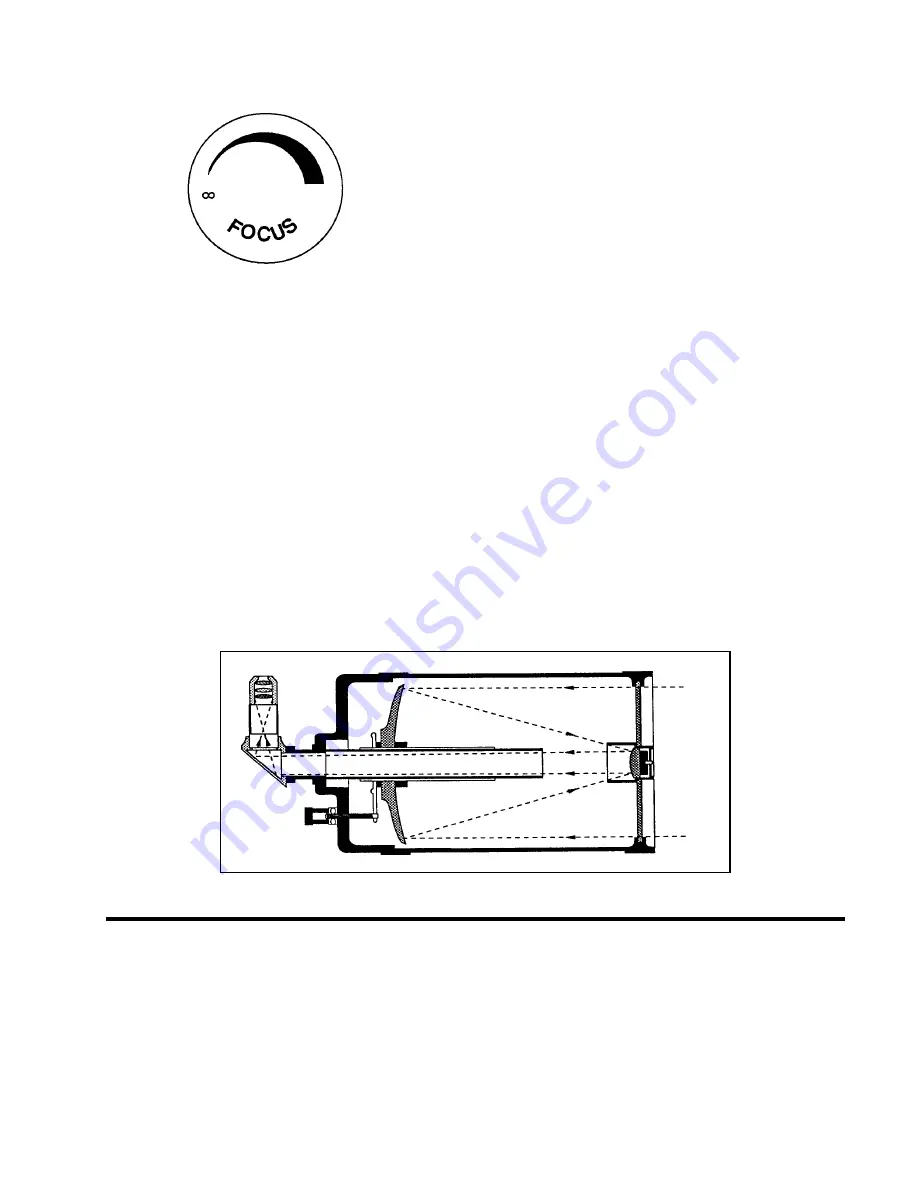
49
Figure 5-3
The decal on the end of the focus knob
shows the correct rotational direction
for focusing your telescope.
The primary mirror is mounted on a ring which slides back
and forth on the primary baffle tube (see Figure 4-4). The
focusing knob, which moves the primary mirror, is on the
rear cell of the telescope. To focus, turn the focusing knob
until the image is sharp. If the knob will not turn, it has
reached the end of its travel on the focusing mechanism.
Turn the knob in the opposite direction until the image is
sharp. Once an image is in focus, turn the knob clockwise to
focus on a closer object and counterclockwise for a more
distant object. A single turn of the focusing knob moves the
primary mirror only slightly. Therefore, it will take many
turns (about 40) to go from close focus (approximately 25
feet) to infinity.
For astronomical viewing, out of focus star images are very
diffuse making them difficult, if not impossible, to see. If
you turn the focus knob too quickly, you can go right
through focus without seeing the image. To avoid this
problem, your first astronomical target should be a bright
object (like the Moon or a planet) so that the image is
visible even when out of focus.
Critical focusing is best accomplished when the focusing
knob is turned in such a manner that the mirror moves
against the pull of gravity. In doing so, any mirror shift is
minimized. For astronomical usage, both visually and
photographically, this is done by turning the focus knob
counterclockwise.
Figure 5-4 This diagram shows the focusing mechanism
Your First Look
With the telescope fully assembled and all the accessories attached you are ready for your first look. Your first look
should be done in the daytime.














































